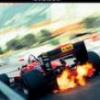Nije za F1, ali upravo sam gledao kako se Mecka S500 vozi sama na relaciji Mannheim - Pforzheim (prva auto tura ikada, Bertha Benz sa 2 sina pre 127 godina). Neverovatno izgleda i jos bolje radi. ![]()

F1 Tehnika
#256

Posted 22 March 2016 - 12:53
#258

Posted 20 April 2016 - 12:21
#259

Posted 26 April 2016 - 19:59
http://www.f1technical.net/news/20316
It has recently emerged that Turbulet Jet Ignition (TJI), and not HCCI, is one of the key technologies that Scuderia Ferrari is using in Formula One engines to push the power unit's efficiency further forward.
Edited by Downforce, 26 April 2016 - 20:12.
#260

Posted 06 May 2016 - 16:42
O novim kvacilima, sa fokusom na Ferarijevo resenje: http://www.motorspor...ngement-733873/
#262

Posted 26 May 2016 - 13:03
Nije F1 ali je primenjivo:
#265

Posted 22 August 2016 - 15:56
http://www.f1fanatic...ny-innovations/
Why has F1 banned so many innovations?
Author Keith Collantine
Paul wrote in to ask the following question about F1’s most controversial technologies:
I need help in locating information on all banned F1 technology. Do you where I can find this information? Any help that you can provide is greatly appreciated. Thank you for your help.
Paul
Formula One is a struggle between car designers striving for every last hundredth of a second of performance and the governing body struggling to keep costs in check and guarantee the drivers’ safety. For these two reasons many innovations have been banned.
Some of these developments were outlandish such as the six-wheeled cars of the seventies and eighties. Some threatened to unleash new extremes of performance if they weren’t kept in check, such as ground effects and active suspension.
Sometimes innovations spread throughout the entire field, while on other occasions only one team had mastered a new technology which, when banned, prompted claims they had been singled out. Especially when the entire concept of their car was rejected.
It’s a fascinating subject which often tells us as much about the politics of F1 as well as the sport and technology. F1 Fanatic previously ran a 16-part series on the topic which covers many of the most famous banned technologies as well as some of the more obscure ones.
Turbos: Banned in 1988, revived in 2014
You can read the entire Banned! archive or find each individual article below:This is not an exhaustive list but it should make for a good starting point. And since these articles were written some of the technologies have been un-banned and new innovations have been outlawed: turbos and slicks have returned, while exhaust-blown diffusers and other devices have been banned.
- Banned: Ground effect
- Banned: Tuned mass dampers
- Banned: McLaren’s rear brake pedal
- Banned: Active suspension
- Banned: Traction control
- Banned: X-wings
- Banned: Turbos
- Banned: Four-wheel steering
- Banned: Slick tyres
- Banned: Gas turbine engines
- Banned: Six-wheelers
- Banned: Brabham-Alfa Romeo BT46B ‘Fan Car’
- Banned: Rocket fuel
- Banned: Beryllium
- Banned: Lotus-Cosworth 88 & 88B
- Banned: Flexi-wings
#266

Posted 04 November 2016 - 18:43
Iza svake tehnoloske inovacije stoje ljudi:
http://www.motorspor...ns-and-counting
Paddy Lowe: 155 wins and counting
by Paul Fearnley on 3rd November 2016
Paddy Lowe has quietly racked up more than 150 victories in Formula 1, Paul Fearnley looks at Lowe's influence
Nico Rosberg’s victory at Spa-Francorchamps in August marked the 150th win of Paddy Lowe’s Formula 1 career.
It’s helped that he’s worked for heavy hitters Williams, McLaren and Mercedes since his arrival in 1987 – but the best jockeys get the best horses.
Or rather in his case the best trainers school the best horses.
This engineering graduate of Sidney Sussex College, Cambridge, was effective straight out of the box: Metal Box, that is.
“A British packaging company that no longer exists,” explains Nairobi-born Lowe. “I was a control engineer doing systems for its machinery.
“It was a help [in Formula 1] actually. It seems pretty distant but, like many industries, packaging is more technical than you might think. The margins on a tin can are minute and so an awful lot is invested to make better cans for less money.
“I watched a TV programme about it recently.”
Has canning moved on since the early 1980s?
“Not particularly, no,” laughs Lowe. “There must have been improvements, but they were too subtle to notice.”
The same cannot be said of the F1 of the past 30 years: an era of advancing technology versus increasingly rigorous rules.
Lowe’s career began when the balance was tipped in the former’s favour, when many areas of performance gain had yet to be considered let alone codified.
His first task was the perfecting of Williams’ version of active suspension.
“I joined in October/November 1987 as joint head of electronics,” he says. “An engineer called Steve Wise [still with Williams] and I started on the same day and were charged with setting up a new department.
“Williams at that time had no internal capability for building electronic control systems.
“Steve was biased towards hardware and I was biased towards software, so we were a great combination.
“Frank Dernie employed us and he was my boss until he moved to Team Lotus [for 1989].
“He was actually looking for a technician but, having interviewed Steve and myself, realised that he needed engineers – and that the team had bitten off a bit more than it could chew.”
Although Williams’ reactive system – Lotus had gotten very protective about its more complex active suspension – had already won in Nelson Piquet’s hands at Monza in 1987, problems were stacking up.
And that’s before Honda took its turbo power to McLaren for Ayrton Senna in 1988.
Lowe: “The background was that Williams had started racing a system very much as an R&D exercise and was using an external contractor – Kurt Borman – for the electronics: the onboard computer and the software.
“What began to unravel at that exact point was that the team was unprepared for the complexities of running a control system like that on a race car.
“We were competing in early 1988 using a system not fit for purpose.
“Over the next three/four years Steve and I created a computer fit for purpose. We built the capability to: design harnesses fit for purpose; design and fit instrumentation, control valves; and devise software for the onboard computer, software for the system that talked to that computer, and software for the data-analysis.
“We created a department to deliver such systems and race them reliably, and support them; to have information available for race engineers and drivers to work with.
“We took it one year at a time: building the infrastructure, employing the people, designing the computers.
“I was the project leader of active suspension and Steve was the project manager of the semi-automatic gearbox control.
“In terms of active we ran for several years with a car that was a year out of the date, by way of an R&D programme. We had our own car, our own driver – Mark Blundell [and later Damon Hill] – our own truck and our own team.
“Mainly we went to Pembrey [in South Wales].
“I liked going there. A nice little track, it had all the elements we needed in terms of types of corner and so on.
“Eventually we got to a point in 1991 where we converged: a current car fitted with active so that we could do a direct comparison.”
“We were sure it would work. But many weren’t.”
Nigel Mansell, a naysayer because of his problems with earlier iterations at Lotus (in 1983), as well as at Williams, ran the system for a few practice laps at the season’s Adelaide finale.
“The car was still too heavy,” says Lowe.
“The trouble with R&D is that you are always using spare resource to some degree. You are on the back foot trying to grab and borrow bits and time and effort from people.
“And if you don’t know absolutely that it’s going to deliver, you don’t put in a huge commitment in case it puts your main programme at risk.
“Patrick [Head] was very supportive after Frank [Dernie], the project’s initiator and champion, left. He picked up the baton and provided the resources to keep going.
“He kept the faith.”
Head gave the green light after a week’s winter test at Estoril – just six weeks before the start of the 1992 season.
Lowe: “The system was massively more complicated than 1988’s – though if you laid it out on bench you would think it simpler; it was far more elegant.
“In terms of software it did far more.
“1988’s stuck at a constant ride height at all speeds, which is the essential part of having reactive suspension for aerodynamic benefit.
“What we were doing in 1992 was scheduling ride height in quite a complex manner. It didn’t anticipate – but you could feed-forward.
“One of the big gains we found was tipping the car in as the driver turned the wheel; it banked itself.
“One of the nice things about 1992 was that a lot of things came together all at once. We got the gearbox, which had been a bit ropey in 1991, sorted out – and we invented traction control, which was worth another second per lap, for far less work by the way than active suspension.
“When we went to Kyalami [for the opening round] we brought all these systems: worth two seconds a lap, plus another half from the gearbox relative to McLaren’s.
“I kept waiting for McLaren to turn the wick up. But eventually I realised that we had something that they couldn’t match.
“It was very interesting to watch the Senna film because I had never seen it from his point of view. He was the enemy. We had put years of our lives into inventing new systems to try to beat him.
“In the film you saw the other side: how depressed he was. He realised that they had been caught napping.”
McLaren threw the kitchen sink at it, brought its new model forward by a month – and sent six cars to Interlagos – but Mansell and FW14B were unstoppable by then, winning the first five of six GPs – and nine in total.
By the time McLaren’s active car finally arrived, at Monza in September, ‘Our Nige’ had wrapped up the title.
And rising star Lowe was on the verge of being poached.
After 21 wins with Williams he joined McLaren, where he worked his way through the ranks while being involved in 83 further victories between 1993 and 2012.
And after a spell of gardening leave he joined Mercedes-Benz in June 2013 as executive director (technical) – whereupon Rosberg promptly won the British GP.
Just sayin’.
Lewis Hamilton’s most recent victory in Mexico was the 51st of his career.
It was also Lowe’s 51st with Mercedes-Benz.
And he now has as many wins as the Cosworth DFV: 155.
#267

Posted 23 February 2017 - 18:32
Nisam znao gde da stavim sliku. Mislim da je ovo najprikladniji topik. Koliko se promenio dizajn bolida za 10 godina:

#268

Posted 24 February 2017 - 01:55
Povratak ajkulinog peraja me je postakao da tragam za ranijim izdanjima i na koncu sam sproveo istraživanje. 46 bolida su tokom istorije u jednom momentu imala ovo rešenje.
Prvo pojavljivanje ovog rešenja aerodinamike koje stabiliše bolid u krivinama bilo je 1955. godine gde su tri tima iskušala tu novotariju na svojim bolidima: Konaut BS, Kuper T40 i Eperli Indi Roudster (bolid se pojavio samo na Indi 500).Kuper je napravio puno modela s nekom vrstom peraja ali s T40 su probili led. U završetak peraja su smestili auspuh i celi sklop podseća na moderne F1 bolide.

Najviše me je zaintrigirao Ferari koji se pojavljivao tri puta s ovim rešenjem u toku velikih tehničkih revolucija.

Najveće peraje u odnosu na veličinu bolida ima ironično Formula 2 bolid Fry F2 koji se pojavio na VN Britanije ali nije se uspeo kvalifikovati za trku.

Galerija ► LINK
Prvi Ferarijev bolid s ajkulinim perajem je 312B iz 1969 i kako sam ranije pomenuo nastao je u vreme velike tehničke revolucije kada su bolidi postali "grbaviji", dobijali krila pa zakrilca pa prednje i zadnje spojlere i crveni su se dosetili da spoje zadnji spojler na bolid tako što će trouglasto parče metala postaviti uspravno na rolhop pa onda spojler na to parče metala. To rešenje predstavlja prvo ajkulovo krilo na modernom F1 bolidu.
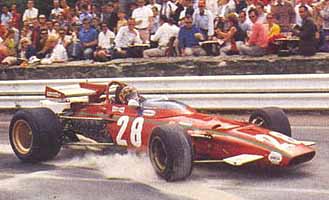
Mada ono izgleda robusno već su na sledećem modelu 312B2 1971. godine uveliko poboljšali tako da verzija peraja od rolhopa do zadnjeg spojlera se nije pojavila u f1 sve do 2009.

Ironično te 2009 nisu imali peraje ali već sledeće se pojavio na F10 bolidu (spomenuta treća velika tehnička revolucija).

U onoj drugoj revoluciji smo videli jedini model f1 bolida s "evektom tla" sa perajem i to na Ferarijevom 126CK. Istini na volju peraje se pojavilo na prezentaciji te na još jednom predsezonskom testu i skinuto je pre početka 1981. sezone.

Slična priča kao Red Bul i model RB7, doneli rešenje na prezentaciji te obavili par testnih dana ali trkačke vikende nikad nije videlo.
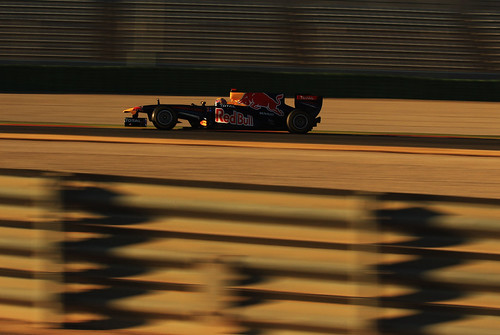
Poslednji F1 bolid s perajem pre ove godine je bio Mercedes W03 iz 2012 godine a ono je bilo deo FIA-inog predloga poboljšanja indetifikacije vozača tokom prenosa s natpisom inicajala vozača, zastavom i izabranog broja. Bolid je bio testiran na Manji Kur stazi gde je Pireli testirao gume.
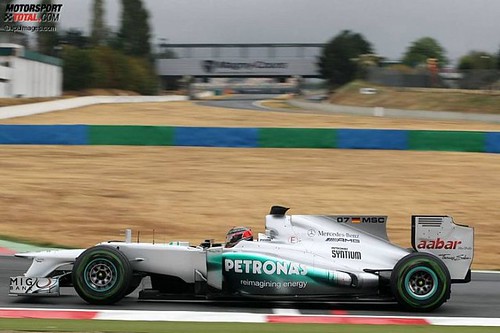
U ovom retkom da tako kažem klubu bolida s perajem nalazi se i naš Stefan GP S-01
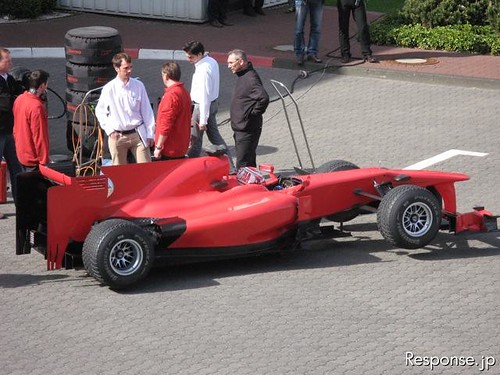
Koji bolid će postati 47. s perajem u istoriji ovog sporta videćemo već danas...
Edited by /13/Ален Шмит/, 24 February 2017 - 02:01.
#269

Posted 14 March 2017 - 23:22
Sa uzivanjem sam odgedao snimak predavanja. Jako puno tehnickih detalja, razjasnjenje situacija sa odredjenim timovima iz blize i dalje F1 proslosti.Neke stvari smo vec znali ali mnoge i ne bas. Fenomenalan covek. Totalni lik pritom.





